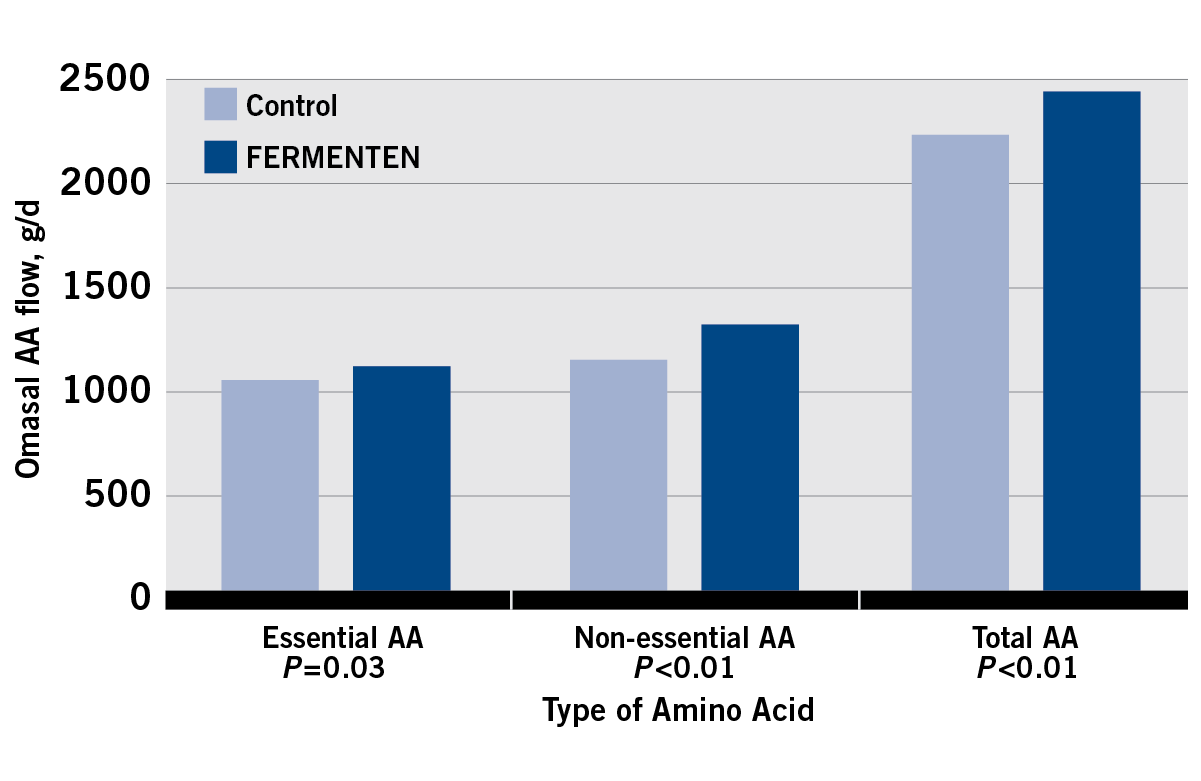
Why metabolizable protein matters.
Not all proteins are the same. Understanding how your cows utilize metabolizable protein (MP) can impact the nutritional efficiency and productivity of your cows. While the protein requirement of feed rations is based on crude protein (CP), MP is the most critical factor.
CP vs. MP
MP is the usable protein for your cows. MP is the total of microbial protein, which is produced in the rumen, plus fed protein that bypasses the rumen to the small intestine. MP supplies the cow with the essential amino acids she needs for milk production, reproduction and other metabolic functions. The more MP present, the better the cow’s productivity.

Enhancing microbial protein
When the rumen is functioning normally, microbes grow, replicate and then die—producing rumen microbial protein. This aspect of the equation is often overlooked. It’s important to create an optimal environment for rumen function to enhance the rumen microbial populations that produce the building blocks for MP.
Researchers at Cornell University recently investigated FERMENTEN™ as a means of improving MP through rumen activity. When fed to cows as a protein source, FERMENTEN supplies nutrients that positively affect microbial growth in the rumen, leading to less protein degradation and greater MP reaching the small intestine.
The Cornell research confirmed the activity of FERMENTEN in the rumen1. Ruminal degradation of feed N was 15 percent lower in cows fed FERMENTEN—resulting in a significant increase in total amino acid flow from the rumen to the omasum for greater MP. (Figure 1.)
Figure 1. Diet Effect on Amino Acid Flows

Translating to performance
Based on the mode-of-action experimental study, Cornell researchers then conducted a pen study2 to evaluate how improving MP translates to better dairy cow performance.
Researchers compared three forage-corn diets with the same crude protein content, supplemented as follows:
- Soybean meal (control)
- FERMENTEN + soybean meal
- Protected soybean meal
Feeding FERMENTEN increased energy corrected milk (ECM), milk protein and milk fat production. Cows fed FERMENTEN performed better than control cows fed soybean meal or cows fed protected soybean meal. (Figure 2.)
Figure 2. Performance Results of Cows fed FERMENTEN

These results show that producers can use FERMENTEN to feed a more economical, rumen degradable protein source and still gain the higher MP that leads to better cow performance.
Want to learn more about the MP in your dairy rations? Use our rep locator to find a sales rep near you.
READY TO LEARN MORE?Want to learn more about what our #ScienceHearted team can do for your operation? Fill out the form below and one of our experts will be in touch shortly. |
1 Fessenden SW, Foskolos A, Hackmann TJ, Ross DA, Block E, Van Amburgh ME. Effects of a commercial fermentation byproduct or urea on milk production, rumen metabolism, and omasal flow of nutrients in lactating dairy cattle. J Dairy Sci 2019;102:3023-3035.
2 Fessenden SW, Ross DA, Block E, Van Amburgh ME. Effects of soybean meal, FERMENTEN, or expeller soybean meal on milk performance and intake in lactating dairy cattle. J Anim Sci 2016;94(Suppl. 5):777-778.
About Dr. Joel Pankowski |
|
Dr. Pankowski has a diverse background with animal nutrition companies including his current role as Senior Technical Services Manager at Arm & Hammer Animal and Food Production where he has been since May of 2011. Dr. Pankowski earned his bachelor’s and master’s degrees in animal science and dairy management from The Ohio State University and a Ph.D. in reproduction and epidemiology from Cornell University. |





